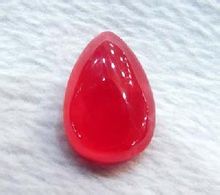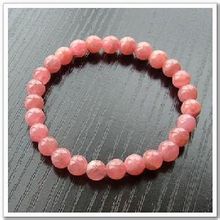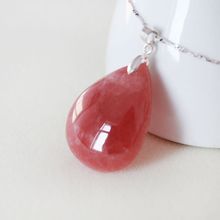The gemstone name of the red stone is rhodochrosite, and the chemical formula is MnCO3. Because its color is generally pink, the surface often has milky white stripes, hence the name (Fig. 1). The gemological name of "rose stone" is Wei Weihui. Stone, chemical formula is (Mn, Fe, Mg, Ca) SiO3, the English name RhodonITe comes from the Greek word, refers to the rose (Rose) to symbolize its color. The author uses the naked eye, conventional gem instrument, infrared spectrometer to Two gemstones were tested and analyzed to provide useful information for identifying them. The “red stone†surface often has white stripes and is in the form of a strip. "Rosestone" does not have this structure, which is the most obvious distinguishing feature between the two; in the case where the "red stone" stripes are not obvious, we can distinguish by observing the black spots on the surface, "Rose Stone "The surface is visible with black manganese oxide spots; in addition, we can distinguish them by cleavage. "Red stone" belongs to the calcite family in mineralogy, and has three sets of rhombohedrons completely cleavage. "Rosestone" has only two complete cleavage. In the case of non-aggregate, cleavage can be used to distinguish them; in terms of transparency, "red stone" is generally transparent to translucent, while "rose stone" is rarely transparent. Generally opaque or slightly transparent. The refractive index of "red stone" measured by a refractometer is 1.579-1.817, the point measurement method is usually measured at 1.60, the birefringence is 0.220, and the aggregate is unmeasurable, which is a one-axis crystal negative light. The refractive index of "rose stone" is 1.733-1.747, and the refractive index value of the aggregate point measurement method is 1.73. Since quartz crystal can be as low as 1.54, the birefringence is unmeasurable and it is biaxial crystal, and the optical property can be positive or negative. From the aspect of refractive index value, there is a certain overlap between the two ranges, which brings certain difficulties to distinguish them. Therefore, we must distinguish them from other aspects; under ultraviolet light, the "red stone" long wave is not medium to pink, short wave Nothing is weak red. The "rose stone" is fluorescently inert; the other two have different absorption characteristics of the gemstone under the beam splitter. The "red stone" has a weak absorption band of 410 nm, 450 nm and 540 nm. "Rose Stone" absorbs broadband at 545 nm, and the 503 nm absorption line has pleochroism. The "red stone" transparent crystal is medium to strong, orange yellow, red, and the aggregate has no pleochroism. "Rose Stone" pleochroism is weak to medium, single crystal can show orange-red or brown-red pleochroism, and the aggregate is also opaque; in terms of damage detection, the Mohs hardness of "red stone" is 3 -5, and "Rose Stone" Mohs hardness is 5.5-6.5, so "Rose Stone" can be described as "Red Stone". In addition, since the main component of "red stone" is MnCO3, it can be foamed rapidly with hydrochloric acid, and "rose stone" does not have this reaction. Under the microscope, the "red stone" showed a white band, and the three groups were completely cleaved. The "rose stone" is a common granular structure, and often has a black punctate manganese oxide inclusion. The sample was tested by Bruker TENSOR27 infrared spectrometer. The diffuse reflection method has a resolution of 2 cm-1, the measurement range is 400-1600 cm-1, and the scanning signal is accumulated 32 times. The main absorption peaks of "red stone" are 1483, 875, and 722 cm-1, and the absorption at 875 cm-1 is strong. The main absorption peaks of "Rose Stone" (Fig. 7) are 1075, 1010, 966, 915, 723, 699, 580, 503, 468 cm-1, and the absorption peak at 966 cm-1 is stronger, with the rose phosgene The infrared absorption band is consistent. It can be seen from the above that the infrared absorption spectra of the two in the mid-infrared diffuse reflection range of 400 to 1600 cm-1 are significantly different, and are different gemstone varieties. Through the above test analysis, it is considered that "red stone" is easier to identify when it has a characteristic white stripe structure. However, "red stone" is very similar to the appearance of "rose stone" without white streaks, and it is difficult to distinguish them with the naked eye. I would like to remind everyone: we can't rely on experience, but need to use conventional instruments and infrared spectrometers to identify. Twin Mattress Topper,Full Size Mattress Protector,California King Mattress Protector,Twin Mattress Protector Waterproof Hangzhou Dowin Hometextile Co.,Ltd. , https://www.dowinbedding.com


Rhodochrosite